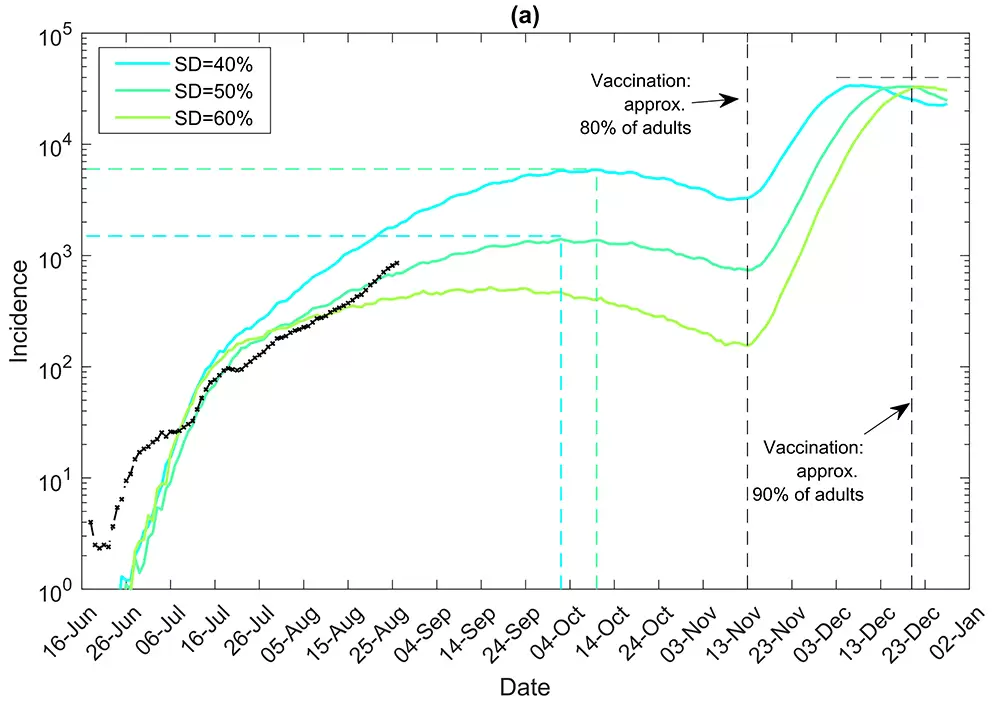Researchers including systems and software engineers have used agent-based models to help health authorities monitor and predict the spread of COVID-19.
The modelling was led by Professor Mikhail Prokopenko, Director of the University of Sydney’s Centre for Complex Systems, and his colleagues including mechatronics engineer Oliver Cliff and research associates Sheryl Chang and Cameron Zachreson.
The team used Artemis High Performance Computing (HPC) and three layers: demographics, with an anonymous digital twin for every person counted by the census; mobility, with the agents moving among households, schools and offices; and the characteristics of the disease.
“Every simulation was a large run that involved the use of a supercomputer, parallel computing and computer clusters,” Prokopenko told create.
While agent-based models look ideal for simulating possible interventions to guide policy, even experts acknowledge they are laborious to build and tricky to calibrate.
“We began with an analysis of relevant research literature to collect key numbers and data,” Prokopenko said.
“That was followed by calibration, using different inputs to produce different outputs and comparing that with what was known.”

To date, the COVID-19 modelling has informed a report to the Federal Government from Australia’s Group of Eight universities, and two reports from the World Health Organisation.
“We successfully predicted the peak of the first COVID-19 wave in April 2020 and the resurgence of the epidemic in Melbourne,” Prokopenko said.
“Our modelling of the Delta strain now shows that current COVID-19 cases will peak in Australia in early October, however, social distancing restrictions must be maintained to prevent a steep rise in daily cases.”
Despite this immediate post-lockdown surge, pandemic growth is expected to slow from mid-December, with 75 per cent of the population vaccinated and natural immunity developed by three to five per cent of the entire population by the end of the year, he said.
The newly released extended projections use a model previously published on pre-print server arXiv, following a series of peer-reviewed publications in Nature Communications and other journals.
The future of complex systems engineering
As well as modelling for COVID-19, the researchers have also used Artemis to model the demise of the medieval Cambodian city of Angkor, driven by failures in its large and convoluted water distribution network, cascading as a result of abrupt climate variations.
It has also been used to model fluctuations in the housing market, to study neural connections in the human brain and to develop artificial intelligence software. This software won two world championships at RoboCup, the international robotic soccer competition where fully autonomous robot teams compete against each other.
Prokopenko said he imagined future applications would include helping to design infrastructure that is resilient to crises brought about by overpopulation, human error and other threats.
Oliver Cliff, who has a Bachelor of Engineering and a PhD in Artificial Intelligence/Robotics from the University of Sydney and worked on the research, said that studying engineering had developed his interest in complex, theoretical models to predict outcomes in the face of uncertainty.
“Whether it is predicting epidemics or markets, or coordinating a team of robots, complexity science paves the way for understanding and controlling some of the most important problems facing our society today,” he told create.
Engineers with good quantitative and analytical skills are essential to building models and understanding cascading failures and critical phenomena intrinsic to complex techno-social systems, Prokopenko added.
“I think complex systems will be even more important to engineers in the future,” he said.
“We are facing many challenges that go across system boundaries, for example, climate change, ageing infrastructure, economic volatility, increasing urbanisation and pandemics.
“Computational modelling of complex systems has the potential to contribute to global health and sustainability by identifying more timely and precise emergency interventions.”